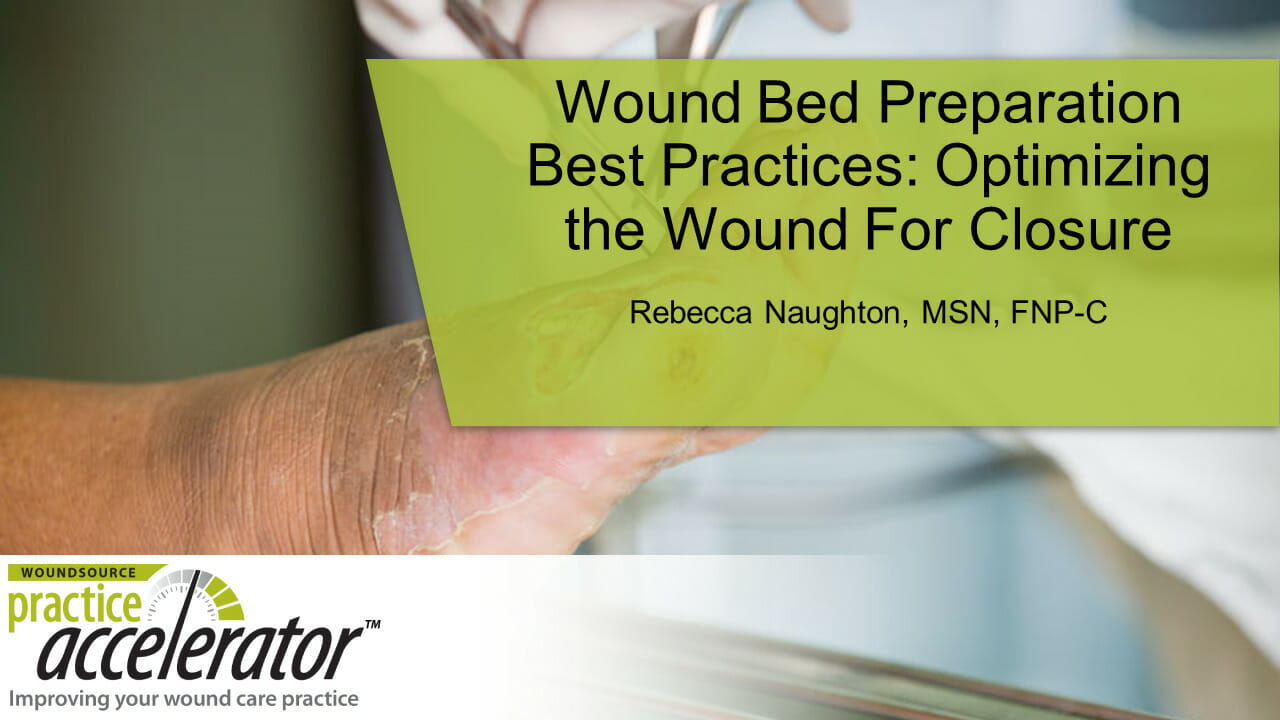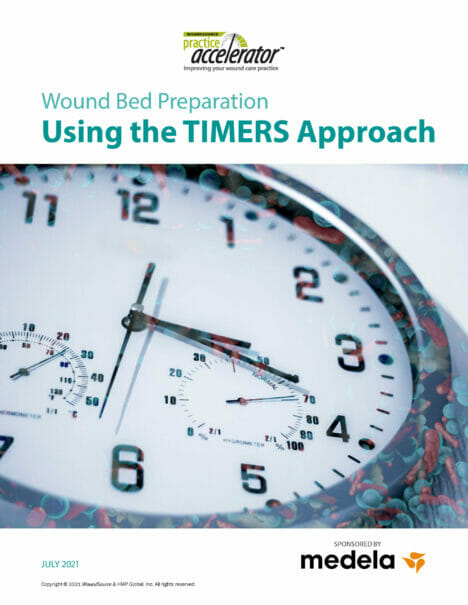
Wound Bed Preparation
JULY IS WOUND BED PREPARATION MONTH For this month's WoundSource Practice Accelerator series, we are providing education on a variety of topics related to wound bed preparation. Scroll below to read this month's white paper and articles, to print out our quick fact sheet, and to sign up for this month's webinar.
Upcoming Webinar
Wound Bed Preparation Best Practices: Optimizing the Wound For Closure
Thursday, July 29Rebecca Naughton, MSN, FNP-C
Wound bed preparation is an important component of wound management. Gaps in knowledge of how and why to prepare a wound bed properly for conventional or advanced wound care modalities may delay or impede healing outcomes. This presentation will describe how to prepare a wound bed properly to allow for optimal healing. It will define the term "wound bed preparation" and how it can aid in the management of tissue necrosis and maintain a proper bioburden balance of the wound’s environment. The concept of "TIME" will be used to evaluate a wound’s readiness to progress into the healing phases. The healing phases of hemostasis, inflammation, proliferation, and maturation will be reviewed, and the focus of each phase when preparing the wound bed for treatment will also be discussed. The presentation will conclude by outlining methods of preparing a wound bed for conventional or advanced treatment modalities, including "BEAMS" debridement methods, conventional and advanced dressings, cellular products, and wound vacuum application. Overall objectives:
- Define the term "wound bed preparation."
- Evaluate the wound closure based on the acronym "TIME."
- Determine when a wound bed is ready to accept advanced treatment modalities based on its phase of healing.
- Review methods of preparing a wound bed: "BEAMS", dressings, cellular products, and negative pressure wound therapy.
White Paper
Wound Bed Preparation Using the TIMERS Approach
For the last decade or so, the best practice approach to wound care has been based on the TIME (tissue, inflammation or infection, moisture, and edge) framework. More recently, TIME was updated to TIMERS, a more patient-centered approach ensuring that all aspects of wound care are addressed. This extensively referenced white paper describes in detail each element of the TIMERS framework for wound bed management and wound care. The addition of regenerative processes (R) and social factors (S) ...Fact Sheet
Quick Facts - Wound Bed Preparation 2021
Wound bed maintenance is essential for creating and preserving an optimal environment for wound healing. As in other aspects of wound care, patient education is vital to the success of wound bed preparation regimens. Beginning with assessment, wound bed preparation comprises wound cleansing, infection control, exudate management, and removal of non-viable tissue, to promote the formation of healthy granulation tissue and move the wound toward closure. This fact sheet contains up-to-date informat...Featured Articles
Maintaining the Wound Bed
Wound bed maintenance is the process taken by the bedside clinician or nurse to create or preserve the wound environment at optimal conditions and thus encourage the chronic wound to move to a state of closure or healing. Critical thinking skills require a trained eye focused on the characteristics ...
Read MoreEncouraging Success With Wound Bed Preparation
Preparing the wound bed to encourage and promote healing is a well-established concept. Wound healing is a complex process that progresses through several phases, including coagulation and hemostasis, inflammation, cell proliferation and repair, and epithelialization and remodeling of scar tissue. I...
Read MoreWound Bed Preparation Challenges
Wound bed preparation has been performed for decades in managing wounds of various etiologies. The wound healing process consists of a complex interlinked and independent cascade, which not all wounds follow in a consistent, organized manner. The TIMERS acronym, consisting of four general steps, has...
Read MoreEducating Your Patients About Wound Care and the Wound Healing Process
Patient education should be a priority to empower patients to care for themselves and improve patient outcomes. Involving patients in their own care can help them to understand about their wound and be more adherent to the overall treatment plan. Remember to involve the caregiver or family if applic...
Read More









